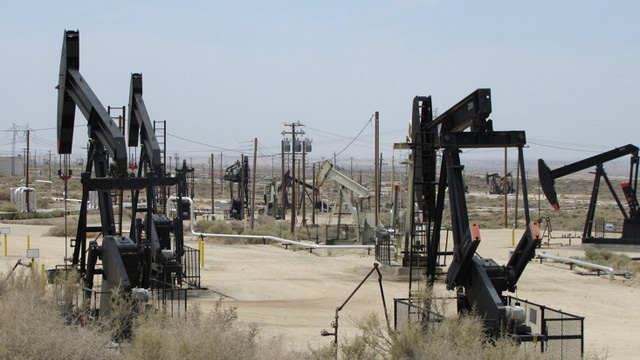
The debate over hydraulic fracturing is heating up in California, as the state released draft regulations on Friday for the controversial oil extraction technique. This follows a bill signed by Governor Jerry Brown earlier this year that adds new requirements for oil companies to protect groundwater and disclose more public information.
“These regulations are the strongest and most comprehensive environmental public health protections of any oil and gas producing state,” said Mark Nechodom, director of the California Department of Conservation, which oversees the state’s oil and gas division.
“At the same time,” he said, “these regulations are designed to ensure that the oil and gas industry in California, which is a key element of the California economy, will remain productive and competitive.”
The technique by which water, sand and chemicals are injected underground at high pressure to release more oil has been used for decades in California. The long-awaited draft regulations represent the state’s first effort to address fracking, beyond the standards for oil well construction.
New requirements in proposed fracking rules:
- Oil companies must apply for a permit before fracking and disclose where it will take place, how much water will be used, the source of that water and how it will be disposed of.
- They must disclose what chemicals are used in fracking, but not the concentrations in cases where they claim a trade secret exemption.
- Oil well operators must provide at least 30 days advance written notice before fracking, to landowners and neighbors within 1,500 feet of the well.
- Property owners may request water quality testing of their own wells before and after fracking.
- Well operators must review earthquake faults in the area to ensure that the fluids used fracking don’t migrate along faults.
- An independent science panel will study the potential risks from hydraulic fracturing and other extraction techniques like acid well stimulation and report by January 1, 2015.
- State oil and gas regulators will do an environmental impact review of the potential environmental risks of fracking in the state and report by July 1, 2015.
- The state will also set up a website by January 2016 for public information about fracking.
- The State Water Resources Control Board will create a program to monitor groundwater basins specifically to protect drinking water sources from fracking.
Call for a Moratorium